Route To Everest Base Camp: From Kathmandu To EBC
Embarking on the route to Everest Base Camp is more than just a trek; it's a journey into the heart of the Himalayas. We'll walk you through each day of this awe-inspiring adventure, offering practical tips and insights you won't want to miss.
Everest Base Camp Trek Route: A 12-Day Adventure
From the bustling streets of Kathmandu to the awe-inspiring heights of the Himalayas, we've got you covered on every step of this exciting trek.
Discover Skyhook's EBC treks.
Day 1: Kathmandu to Lukla and Trek to Phakding
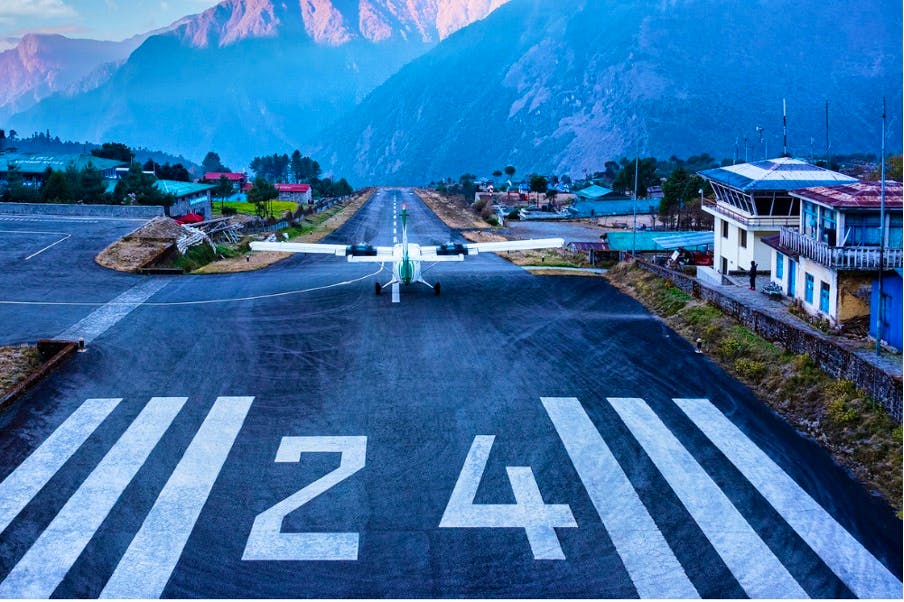
The EBC route kicks off with a flight from Kathmandu to Lukla, often dubbed the "world's most dangerous airport" due to its short runway and challenging weather conditions.
But don't let that deter you; the flight is a 40-minute spectacle, offering breathtaking views of the Himalayas.
Pro tip: Try to book a morning flight, as weather conditions are generally more stable then.
Upon landing in Lukla, you'll feel the crisp mountain air filling your lungs as you prepare for the trek to Phakding. The trail is relatively easy, descending through lush forests and crossing the Dudh Koshi River multiple times via suspension bridges.
It's a 3-4 hour trek, covering approximately 8 km. Along the way, you'll encounter local Sherpa communities and tea houses where you can grab a quick bite or a warm cup of tea.
Phakding serves as your first overnight stop, offering a range of accommodation options from basic tea houses to more comfortable lodges. Getting some rest here is a good idea, as the trek becomes more challenging in the days ahead.
Day 2: Phakding to Namche Bazaar
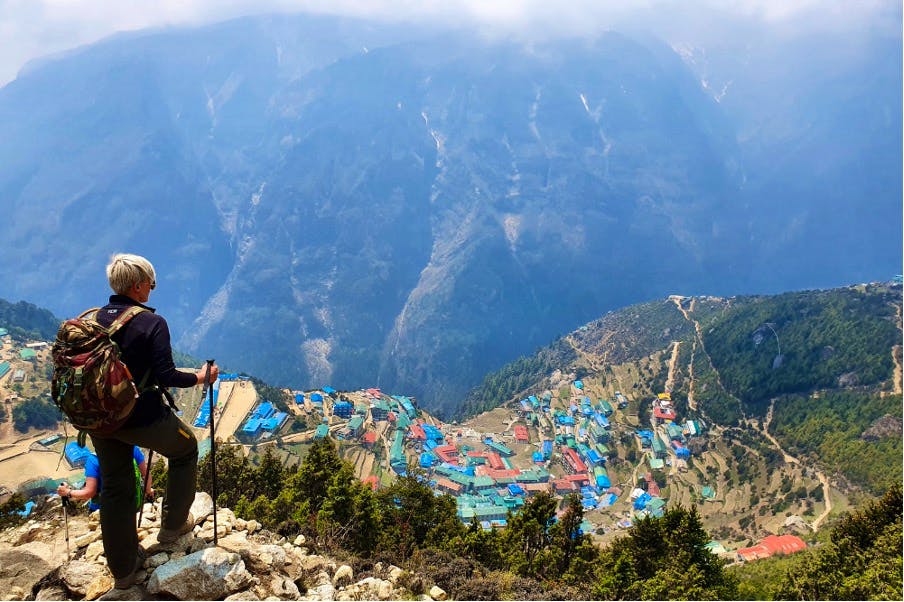
In our experience, day 2 is when the real adventure begins. The trek from Phakding to Namche Bazaar is a challenging yet rewarding adventure, covering a distance of about 12 km.
You'll start with a relatively flat trail, but don't get too comfortable—the route soon turns into a steep ascent, especially as you approach Namche.
The scenery is nothing short of spectacular. You'll traverse through dense forests filled with blooming rhododendrons and blue pines.
The trail offers glimpses of the mighty Thamserku and Kusum Kanguru peaks, teasing what's yet to come.
Pro tip: Keep your eyes peeled for local wildlife; you might spot Himalayan tahr or musk deer if lucky.
As you ascend, you'll cross the Dudh Koshi River again, this time on the iconic Hillary Suspension Bridge, adorned with colourful prayer flags.
The final stretch is a series of zigzagging switchbacks leading up to Namche Bazaar, the Sherpa capital. The sense of achievement is palpable when you finally arrive, and the bustling market town offers a warm welcome.
Namche Bazaar is a hub of activity, with shops, cafes, and even an ATM. It's the perfect place to rest and acclimatize before the trek continues. Explore the local market and perhaps indulge in some local cuisine—you've earned it!
Day 3: Acclimatization in Namche Bazaar
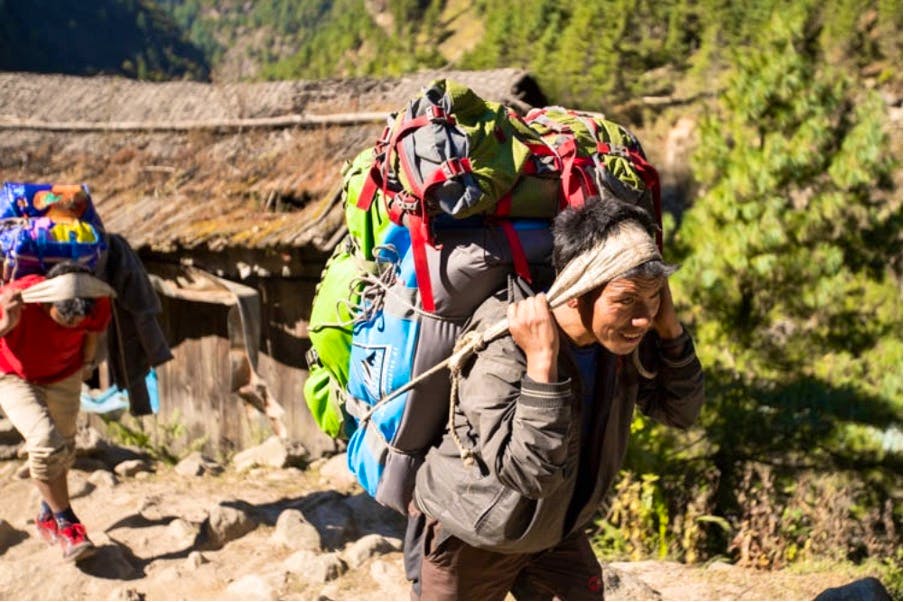
Day 3 is all about acclimatization, a crucial step to ensure you're well-prepared for the higher altitudes ahead. Namche Bazaar, sitting at an elevation of 3,440 meters, is the ideal place for this.
Acclimatization helps your body adjust to the reduced oxygen levels, minimizing the risk of altitude sickness. It's not just a day off; it's a necessary pause for your well-being.
While you're acclimatizing, Namche Bazaar offers plenty to keep you engaged. For those interested in culture, the Sherpa Museum provides fascinating insights into the life and history of the Sherpa people.
Head to the Everest View Hotel if you're up for a short hike. It's about an hour's walk from the town centre, and as the name suggests, offers stunning views of Mount Everest on a clear day.
For the more leisurely inclined, Namche has several cafes where you can sip on local tea or enjoy freshly brewed espresso.
Don't miss the Saturday market, a weekly event where locals and traders from surrounding villages come to sell everything from fresh produce to trekking gear.
Taking it easy in Namche Bazaar enriches your trekking experience with cultural and scenic delights. So, take this day to explore, learn, and, most importantly, acclimatize.
Day 4: Namche Bazaar to Tengboche Monastery, Overnight at Debuche
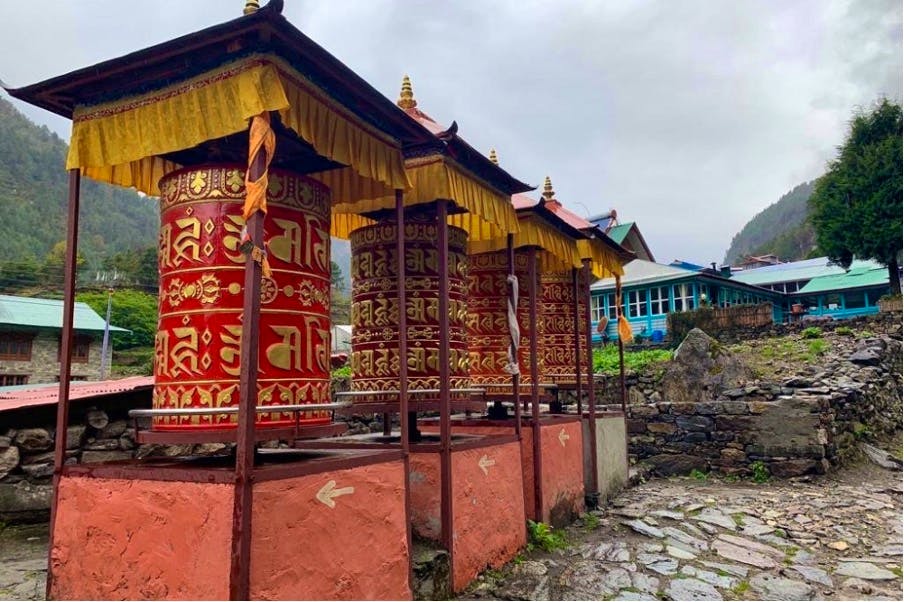
Today is a blend of spiritual and natural wonders as you trek from Namche Bazaar to the revered Tengboche Monastery, followed by an overnight stay at Debuche.
The trek covers a distance of approximately 10 km and takes around 5-6 hours. The trail starts with a relatively flat walk but gradually ascends as you approach Tengboche.
The journey is a feast for the eyes. You'll be walking through rhododendron forests, and if you're trekking in the spring, the blooms are a sight to behold.
The trail also offers panoramic views of Everest, Nuptse, Lhotse, Ama Dablam, and Thamserku, making every step worthwhile.
Tengboche Monastery is the spiritual heart of the Khumbu region. It's one of Nepal's most important Tibetan Buddhist monasteries and offers an aura of peace and serenity.
Pro tip: If you time your arrival well, you might even witness the monks in prayer. This mesmerizing experience adds a unique dimension to your trek.
After soaking in the spiritual vibes at Tengboche, you'll head to Debuche for the night. The accommodations here are more basic than Namche Bazaar, but they offer all the essentials for a comfortable stay. It's a quieter setting, allowing you to reflect on the day's experiences as you prepare for the days ahead.
Day 5: Debuche to Dingboche
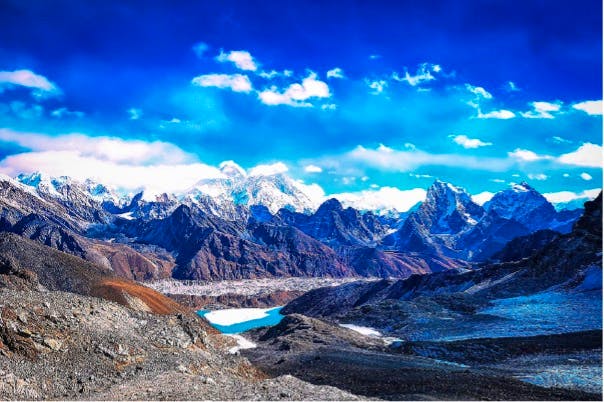
Day 5 takes you from the tranquil setting of Debuche to the picturesque village of Dingboche. The trek covers a distance of about 11 km and takes approximately 5-6 hours.
As you leave Debuche, you'll walk through lush alpine forests, gradually giving way to more barren landscapes as you gain altitude.
One of the day's highlights is crossing the Imja River via a suspension bridge, a thrilling experience that adds a dash of adventure to your trek.
The trail then ascends, offering stunning views of the Lhotse and Island Peak. It's a challenging climb, but the vistas make it all worthwhile.
As you approach Dingboche, the terrain becomes more rugged, and the air thinner. The village itself sits at an elevation of 4,410 meters and serves as another acclimatization stop for trekkers heading to higher altitudes.
Dingboche is often referred to as the "summer valley" of the Khumbu region, and its relatively mild climate allows for the cultivation of barley, one of the highest fields of barley in the world.
Dingboche offers a range of tea houses and lodges for your overnight stay. It's a good idea to take a short walk around the village to help with acclimatization, and don't miss the sunset—it paints the surrounding peaks in hues of gold and orange, a sight you'll cherish forever.
Day 6: Acclimatization in Dingboche
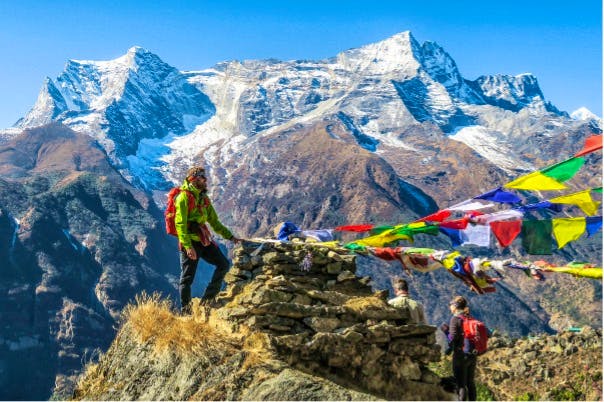
Day 6 is another crucial acclimatization day, this time in Dingboche.
At an elevation of 4,410 meters, spending an extra day here is essential for your body to adapt to the reduced oxygen levels. It's not just about taking it easy; it's about ensuring you're fit and ready for the oxygen level at Everest Base Camp.
While you're acclimatizing, Dingboche offers a variety of activities to keep you engaged.
We recommend a hike to Nangkartshang Peak for those looking to stretch their legs. It's a 3-4 hour round trip that offers panoramic views of Ama Dablam and Makalu, among other peaks. The hike is strenuous but incredibly rewarding.
If you're interested in local culture, consider visiting the Dingboche Monastery. It's a smaller and less frequented spiritual centre than Tengboche but offers unique charm and tranquillity. The monastery also provides excellent photo opportunities with a backdrop of towering peaks.
For a more relaxed day, you can explore the local shops selling Tibetan artefacts or enjoy a book in one of the cosy tea houses. Some trekkers also use this day to write in their journals or soak in the views, reflecting on the journey so far.

Latest Deals
Day 7: Dingboche to Lobuche
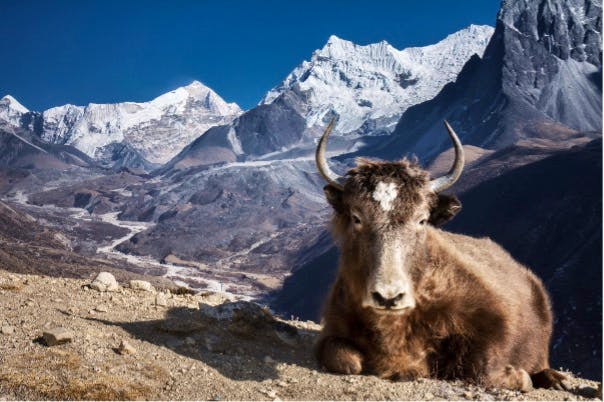
Today marks a significant transition in your trek as you move from Dingboche to Lobuche, a small settlement at 4,940 meters. The trek covers a distance of about 12 km and takes around 6-7 hours.
Pro tip: This is where you'll start to feel the altitude, so it's crucial to pace yourself and stay hydrated.
The trail initially follows a gradual ascent but becomes more challenging as you approach the Thukla Pass. Here, you'll find memorials dedicated to climbers who have died on Everest. It's a sombre yet inspiring moment that adds depth to your journey.
After the pass, the trail becomes rocky and rugged, offering panoramic views of the Khumbu Glacier and several peaks like Pumori and Nuptse. The final stretch to Lobuche is a gentle climb but can be tricky due to the thinning air. It's essential to listen to your body and take breaks as needed.
Lobuche serves as the final stop before the push to Everest Base Camp. The accommodations are basic, but the sense of camaraderie among trekkers is uplifting. Getting some rest and perhaps sharing stories with fellow adventurers over a cup of hot tea is a good idea.
Day 8: Lobuche to Everest Base Camp and Back to Gorakshep
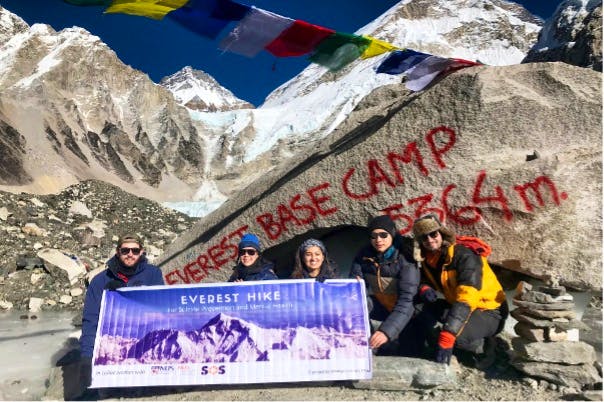
Day 8 is the pinnacle of your journey—the trek from Lobuche to Everest Base Camp, followed by a return to Gorakshep. The day is long and strenuous, covering a distance of approximately 15 km in total, but the emotional payoff is immeasurable.
The trail from Lobuche to Everest Base Camp is rocky and winds alongside the Khumbu Glacier. As you approach the Base Camp, the air becomes thinner, and each step feels like a monumental effort. But the sense of accomplishment is overwhelming when you finally set foot on that hallowed ground. You're standing at the foot of the world's highest peak, a moment that many dream of but few experience.
The view from Everest Base Camp is surreal. You're surrounded by towering peaks, including the formidable Everest itself, although the summit is not visible from the Base Camp.
The atmosphere is electric, filled with the excitement and camaraderie of trekkers and climbers from around the world. It's a moment for photos but also for reflection—on the journey, the challenges, and the sheer beauty of the world's most iconic mountain range.
After soaking in the experience, you'll make your way back to Gorakshep, your stop for the night. The trek back is equally challenging, especially as fatigue sets in, but the sense of achievement carries you through. Gorakshep offers basic accommodations, and getting some rest is essential—you've earned it.
Day 8 is the emotional and physical climax of your trek, which will be etched in your memory forever.
Note: some people either spend another day at Gorak Shep to summit Kala Patthar, or do an early morning hike up Kala Patthar on day 9.
Day 9: Gorakshep to Pangboche
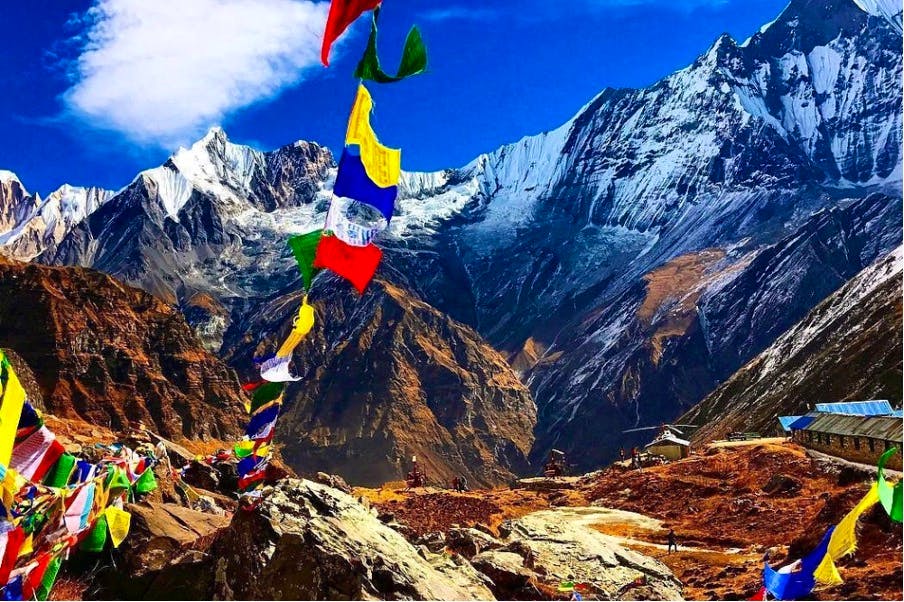
It is no time for your descent, taking you from Gorakshep to the charming village of Pangboche. The trek covers a distance of about 16 km and takes around 7-8 hours.
While you might think descending would be easier, the long distance and the toll of the previous days make this a challenging trek in its own right.
The trail retraces some of the earlier route, offering a different perspective on the stunning landscapes you've already witnessed.
Pro tip: As you descend, the air becomes richer in oxygen, making breathing easier and lifting your spirits.
You'll pass through Lobuche and Dingboche before reaching Pangboche, allowing you to say goodbye to these memorable stops.
One of the day's highlights is the Pangboche Monastery, the oldest monastery in the Khumbu region. If you missed visiting monasteries on the way up, this is an excellent opportunity to immerse yourself in local spirituality. The monastery houses relics that are said to be the hand and scalp of a Yeti, adding a touch of mystery to your visit.
Pangboche offers a range of accommodation options, from basic tea houses to more comfortable lodges. It's a quieter village compared to the bustling hubs of Namche Bazaar and Dingboche, providing a peaceful setting to rest and reflect on your journey.
Day 10: Pangboche to Namche Bazaar
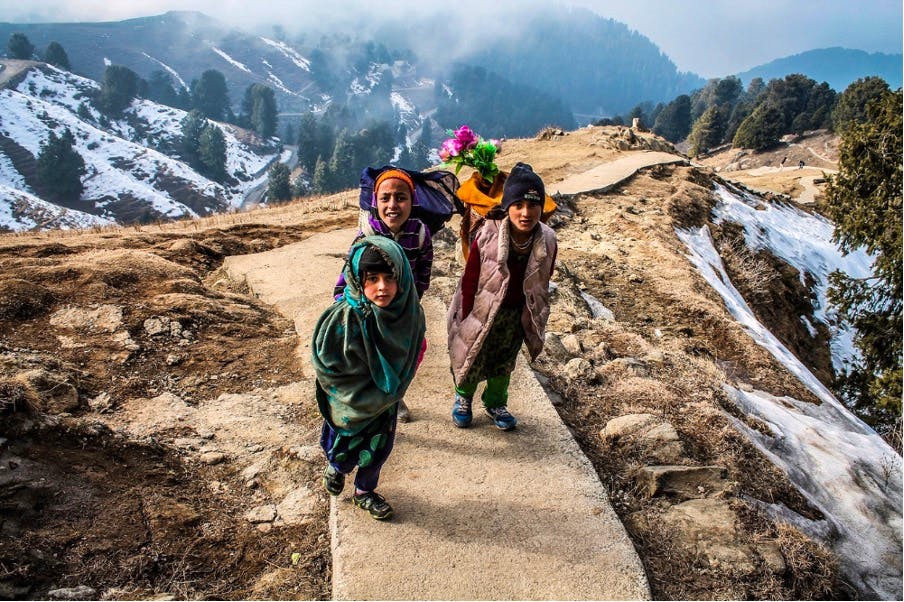
Day 10 takes you back to the familiar terrains of Namche Bazaar. Still, the trek from Pangboche offers its own set of unique experiences.
Covering a distance of about 16 km, the trek takes around 6-7 hours. The trail descends through the same lush forests and suspension bridges you crossed earlier, but the return journey offers a sense of nostalgia mixed with accomplishment.
As you go back, you'll notice things you might have missed on your way up. The Dudh Koshi River, which you cross multiple times, seems even more vibrant, and the forests appear more alive, perhaps mirroring your heightened spirits.
Pro tip: The descent is easier on the lungs but tough on the knees, so we recommend quality trekking poles.
Re-entering Namche Bazaar feels like a homecoming. The bustling market town welcomes you back with its array of shops, cafes, and even that ATM you might need to visit again. If you missed exploring the Sherpa Museum or couldn't get enough of the local pastries the first time, now's your chance to catch up.
It's also a good idea to get a comfortable night's sleep—you've got another day of trekking ahead.
Day 11: Namche Bazaar to Lukla
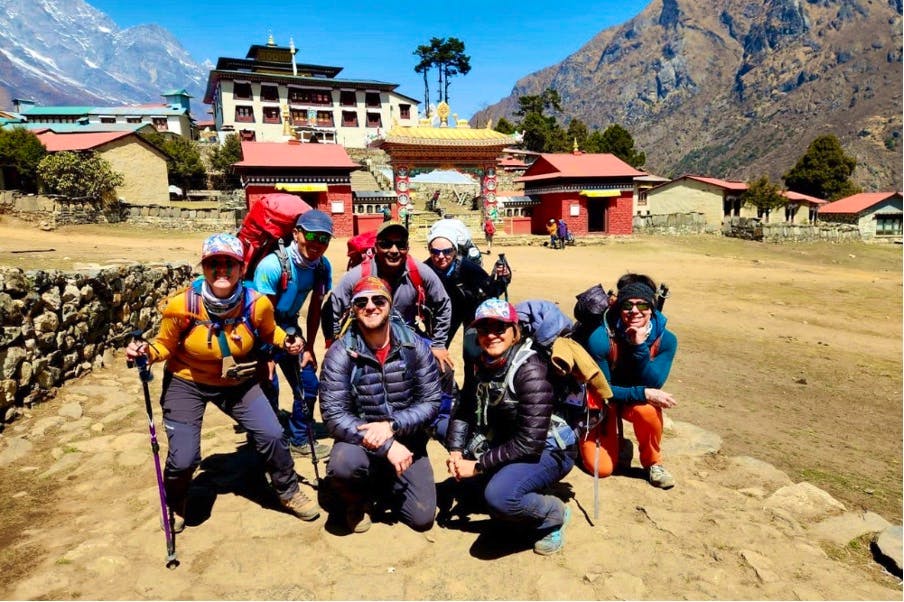
Today is the final trekking day of your epic journey, taking you from the comforts of Namche Bazaar back to Lukla.
The trek covers a distance of about 19 km and takes around 6-7 hours. While the end is in sight, this last stretch demands focus and care, as fatigue and the long distance can make it challenging.
The trail descends steeply before levelling out as you approach Lukla. You'll retrace your steps through the same forests, villages, and suspension bridges that welcomed you at the start of your trek.
It's a day of reflection, offering a chance to reflect on the incredible experiences you've had and the challenges you've overcome.
As you enter Lukla, the feeling is bittersweet. The tiny airstrip that seemed so daunting at the beginning of your journey now feels like the gateway to the rest of the world. It's a moment of triumph and farewell to the mountains that have been your home for the past 11 days.
Pro tip: Lukla offers a range of accommodations, and getting some rest is advisable before your flight back to Kathmandu the next day.
Many trekkers celebrate the end of their journey at local pubs and cafes, sharing stories and perhaps planning the next adventure.
Day 12: Flight from Lukla to Kathmandu
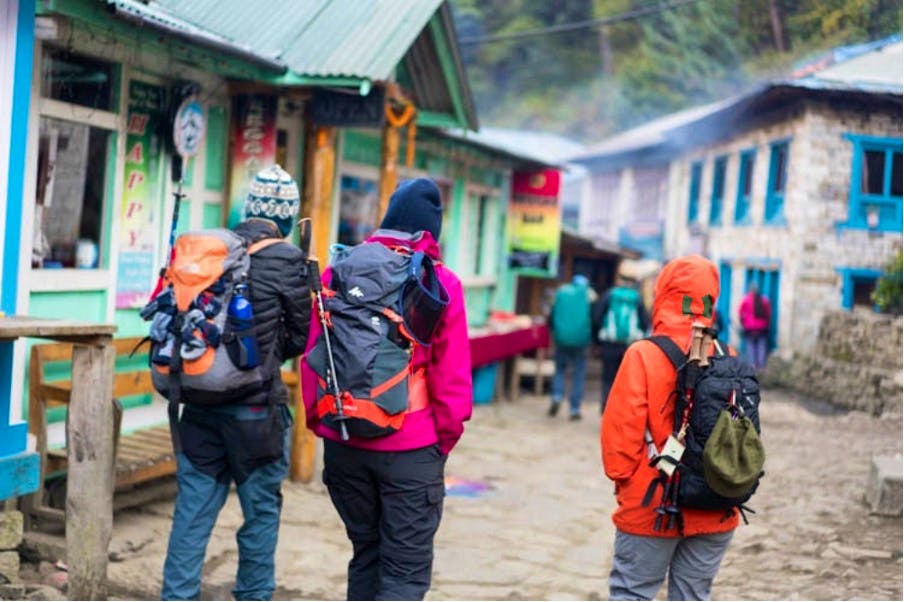
Day 12 brings your incredible journey full circle with a flight from Lukla back to the bustling city of Kathmandu. The 40-minute flight is your last chance to soak in aerial views of the Himalayas, a fitting farewell to the mountains that have been your backdrop for the past 11 days.
The flight is an adventure, taking off from the steep runway of Tenzing-Hillary Airport. As the plane ascends, you'll feel a mix of emotions—relief, nostalgia, and perhaps a tinge of sadness as the peaks fade into the distance.
But as you approach Kathmandu, the cityscape signals a return to urban life, a stark contrast to the natural beauty you've been immersed in.
Landing in Kathmandu, you'll be greeted by the familiar sounds and sights of the city. There are plenty of things to do in Kathmandu.
Whether you explore the city's cultural landmarks, indulge in some well-deserved spa treatments, or relax at your hotel, the day is yours to unwind and reflect on the hike.
Conclusion
In the end, the Everest Base Camp trek is more than just a journey through trails and peaks; it's a transformative experience that challenges and rewards you in equal measure. From Kathmandu's bustling markets to the Himalayas' serene heights, every moment is a step closer to fulfilling a lifelong dream.
More EBC Articles
Popular EBC trips
Find your next adventure
Why Skyhook?
Join over 27,000 Skyhook adventurers who've used our platform to book directly with our vetted local guides, at local prices (we never markup).
Expert Local Guides
Experienced local guides, handpicked by us.
Best Prices
Never pay a markup on the local guide's price.
Exclusive Club
Earn loyalty rewards every time you travel.
Great Social Vibes
Small group tours provide a richer experience.
Stellar Feedback
Over 2,800 reviews, average of 4.9/5 stars.












